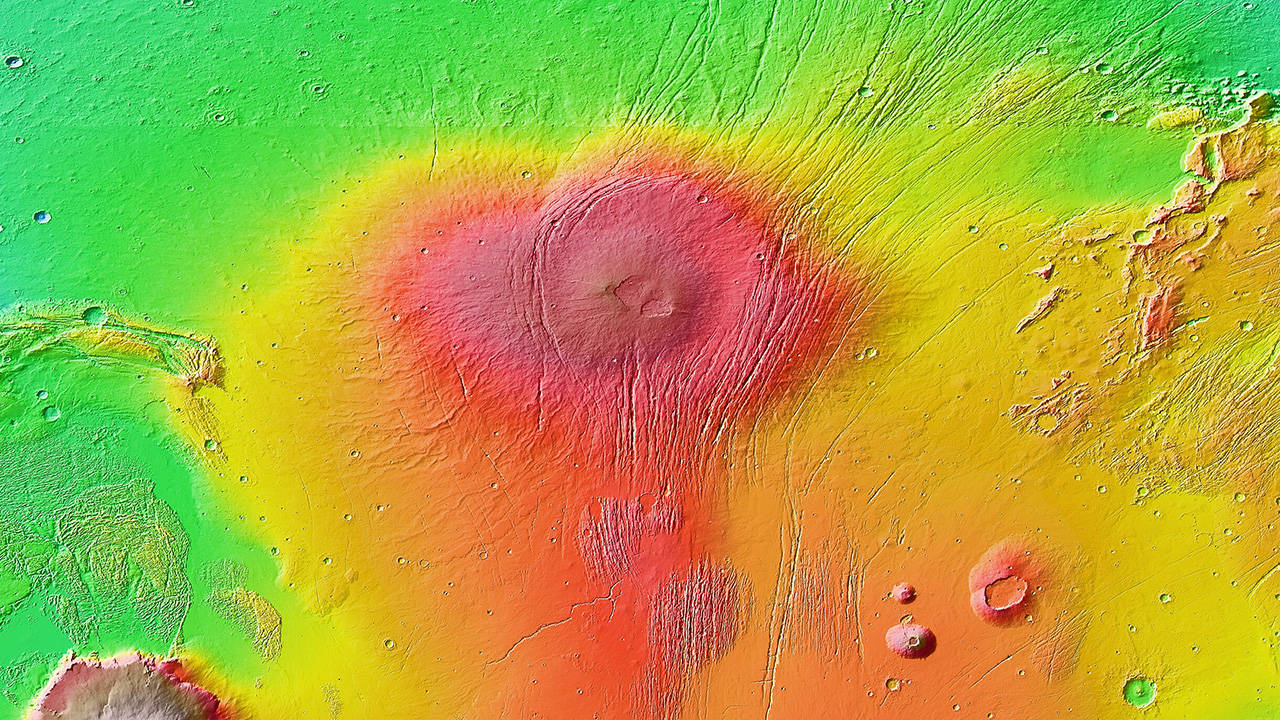Ancient river valleys carved less than 3 billion years ago during Mars’ Early Amazonian Epoch dissect the flanks of the Martian volcano Alba Mons. To understand Mars’ more recent geologic and hydrologic history, three scientists from the Planetary Science Institute used the latest high-resolution images and topographic data of Mars along with hydrologic models to characterize these river valleys in a paper published in the AGU journal Earth and Space Science.
“Alba Mons’ flanks consist of lava flows and lava tubes that depict its earlier eruptive activity and which have been dissected by elongated, sinuous valleys arranged in distinctive patterns,” said David Crown, a PSI senior scientist and study co-author.
The team produced detailed digital maps of these fluvial valleys and correlated their abundance with the different slopes of the volcano’s surface. Alba Mons is broad with a flat top, so at its peak and on its southern slopes, there are fewer valleys. Most intense fluvial dissection is concentrated in the north and northwestern slopes. They found well developed drainage networks in parallel and dendritic – or treelike – patterns that suggest periodic flow of meltwater as well as robust evidence for a history of widespread precipitation.
“Like much of Mars, surface degradation obscures evidence of ancient fluvial systems from the early Amazonian period. By combining multiple datasets, we traced the faint signatures left behind – despite heavy modification – revealing a history of complex climate cycles etched into the landscape. You could say, ‘the valleys can’t hide,” said lead author Stephen Scheidt, a PSI associate research scientist.
“The recently published research is an outgrowth of detailed geologic mapping investigations of the summit region and western flank of Alba Mons that document its volcanic evolution and subsequent tectonic modification,” Crown said. “Geologic mapping also yielded a comprehensive database of fluvial valleys that have allowed the erosion of Alba Mons’ surface to be analyzed.”
Dan Berman, a PSI senior scientist, is also a co-author on this paper.

